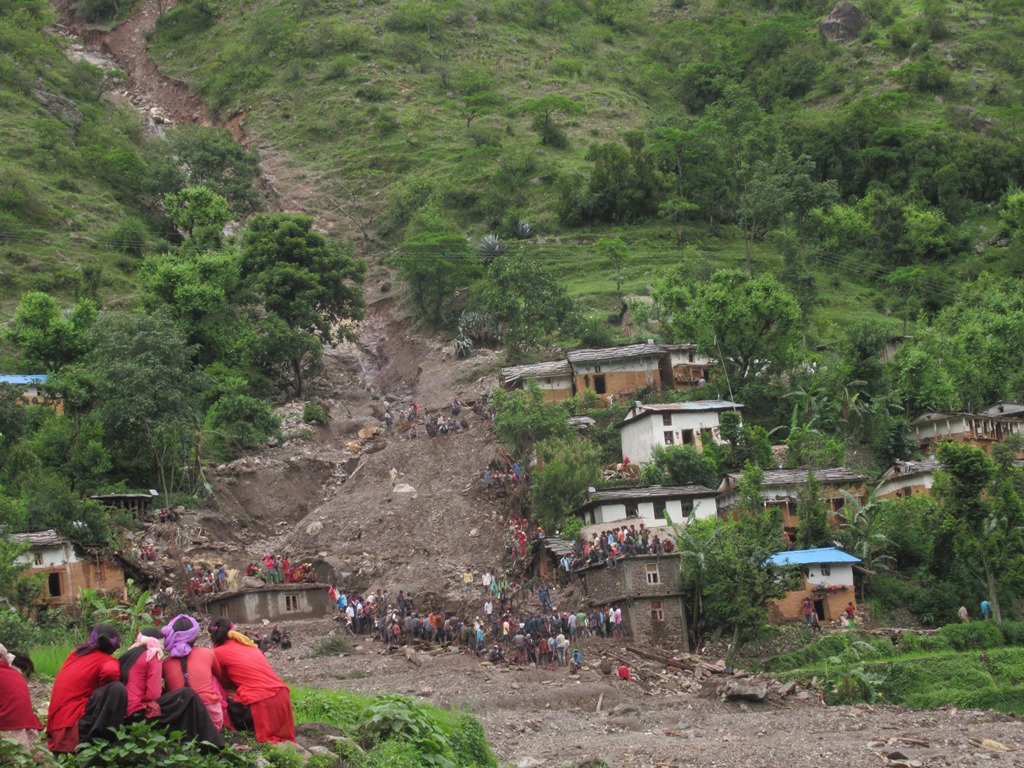Landslide | Monsoon | Road disruptions | Death | Disaster

A few days ago, thousands of passengers were stranded on the Mugling Highway — the busiest and major route linking Kathmandu and Pokhara with southern plains — for as long as 28 hours due to multiple heavy rainfalls followed by landslides.
According to the real-time assessment of the Department of Roads, a total of 74 roads are facing disruption due to heavy rainfall and landslides at the moment. Of which, two roads are completely disrupted; 14 are open for one-way passage of traffic; and 58 roads have been reopened after being blocked previously.
While road disruptions are one of the immediate consequences of landslides, they are also proving extremely deadly.
Each year, the arrival of monsoon triggers landslides, peaking during July and August. When they occur, they significantly devastate Nepal's agricultural land, forests, homes, and public infrastructure.
In fact, Nepal has one of the largest death rates from landslides relative to its population size, says a 2011 UN report.
Between 2010 and 2020, 1,426 people lost their lives in landslides, according to a report by The Third Pole. Over 240 people died across Nepal in 2020 alone.
This year, already 23 people have died — 18 from landslides alone, 13 injured, and 25 are reported missing due to monsoon-induced floods and landslides in the span of 22 days from June 14 to July 5.
In the last seven days, 94 incidents of landslides and 13 heavy rainfalls have been recorded, according to the National Disaster Risk Reduction and Management Authority (NDRRMA).
In 2022, a total of 208 incidents of landslides were recorded, over a 100-day span, which claimed 27 lives, 34 injuries and affected 186 families.
Landslides occurrences have risen since 2015 largely due to the earthquake that occurred the same year, resulting in over 20,000 incidents of landslides across 14 districts in Central and Western Nepal during the period of the earthquake.
Even after five years, the impact of the earthquake was visible through the continued incidence of landslides, says a 2020 report by Progress in Disaster Science.
The Siwalik, the Mahabharat, and the Midland hill ranges remain highly vulnerable.
Natural and human factors — steep terrain, poor soil system, incessant rainfall, deforestation, and unplanned human settlements — are other major causes of landslides.
The haphazard construction of roads has also emerged as another major catalyst. In recent times, the ‘Dojarey Bikaas’ — rampant mobilisation of dozers in the name of construction and development — are also believed to be inviting landslides.
A 2018 report published by the Centre for Investigative Journalism Nepal (CIJ-N) showed that 165 roads were being built in a haphazard manner using 53 dozers around the time of the landslides in the Bajhang district of Sudurpaschim Province.
To manage the risks of landslides — slope stabilisation, foundation strengthening, and use of retaining walls are some critical mitigation measures, experts suggest.
Likewise, the government must undertake geological and geotechnical studies to identify landslide risk zones and inform vulnerable populations. Such a study will further aid in developing hazard maps that can guide land use regulations — to discourage haphazard development activities in landslide-susceptible areas and impose restrictions in high-risk areas.
Read More Stories
Kathmandu’s decay: From glorious past to ominous future
Kathmandu: The legend and the legacy Legend about Kathmandus evolution holds that the...
Kathmandu - A crumbling valley!
Valleys and cities should be young, vibrant, inspiring and full of hopes with...
The majestic Upper Mustang and its water troubles
The wind stirs heavily across the barren landscape as our bus pushes along...